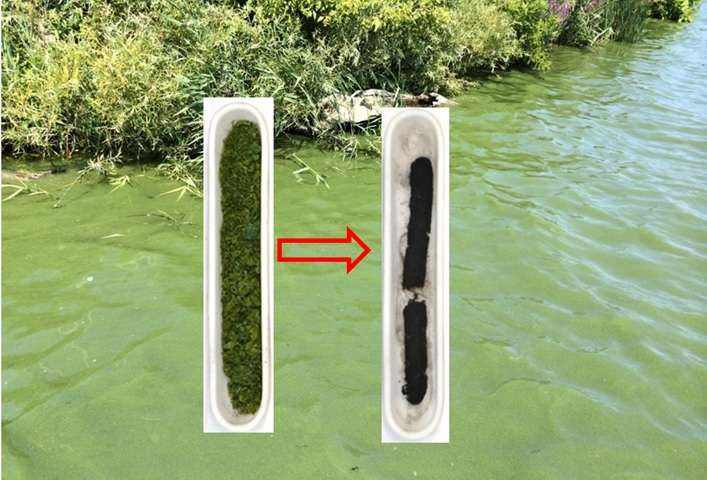A team of researchers found that by heating algal blooms at temperatures of 700-1000 degrees Celsius in argon gas, they could convert it to a material called “hard carbon” which, it turns out, can be used as high-capacity, low-cost electrodes for sodium-ion (Na-ion) batteries.

The team, which was led by environmental engineer Dr. Da Deng at Wayne State University in Detroit, used the seasonal harmful algal blooms in Lake Erie to conduct their research. These blooms have in the past, grown to such extremes, actually poisoned the nearby water system in Toledo, Ohio. This resulted in nearly half a million people being forced to go without drinking water.
Current technologies that exist to control these algal blooms are considered “passive” and have their limitations. Finding an alternative solution to converting them into high-value products, such as that which is described here, could go a long way towards positively impacting society and the environment.
What’s particularly exciting about this solution is the fact that it could benefit Na-ion batteries, which many in the industry consider the eventual replacement to lithium-ion (Li-ion) power sources (this has to do with cost — because sodium is more abundant than lithium, Na-ion batteries are expected to drive the cost of portable power sources down in the near future).
As it stands today, Na-ion battery technology is still in the early stages of development; especially when compared to its Li-ion counterparts. One of the hurdles that researchers have had difficulty overcoming is finding a reliable electrode material. Graphite is often used in the electrodes of Li-ion batteries, but larger Na-ion solutions fit better into hard carbon. This is because hard carbon is more disordered than graphite and contains a greater amount of large defects, thereby making it better at storing the larger Na-ions.
Hard carbon is by no means a new discovery. Typically, it’s derived from petroleum, but it can also come from biomass, and this study marks the first time algae has been directly converted into carbon for Na-ion batteries. Algae is specifically advantageous to this technology because of how quickly it can grow, the fact that it does not require land or soil, and that it can be converted into hard carbon via a simple heat treatment, sans purification or other additional processes.
Taking a look at the numbers generated from experiments with the material, the team was able to make electrodes out of a mixture of 80% hard carbon derived from algae, 10% carbon black (to enhance conductivity), and 10% binder. The slurry was dried out overnight and then assembled into coin cells with sodium foil serving as the counter electrode. Test results showed the electrodes started out with a high capacity of up to 440 mAh/g, but experience an irreversible capacity loss after the first cycle, bringing the capacity down to about 230 mAh/g. After this drop, the electrodes show relatively stable capacity there on out.
Worth pointing out, from a performance standard, is the fact that capacity and stability depend on things like the temperature that the algal was heated to. This is promising, as it could be used as a means for improving battery performance further down the road.
Looking ahead, the team plans to focus on optimizing the electromechanical performance of these batteries; specifically, they want to reduce the performance drop that is experienced following the battery’s first cycle. They also want to begin exploring how to go about setting up large-scale harvesting sessions, and studying the implications that this sort of set-up will have on the ecosystem.
Read the full study here: “Trash to Treasure: From Harmful Algal Blooms to High-Performance Electrodes for Sodium-Ion Batteries.”
Via phys.org
Advertisement
Learn more about Electronic Products Magazine





